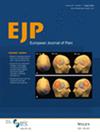The Identification of Pain Phenotypes in Individuals With Low Back Pain in Response to Dynamic Resistance Exercise
Abstract
Background
Exercise-induced hypoalgesia (EIH) describes an acute reduction in pain following exercise. Individuals with low back pain (LBP) demonstrate variable EIH responses, such as increased pain sensitivity (hyperalgesia). Pain phenotyping, classifying individuals with pain sensitivity and psychological characteristics, may explain this variability. LBP phenotypes were classified using pain sensitivity, psychological variables, and EIH response to dynamic resistance exercise.
Methods
In this observational cohort study, 78 individuals with LBP (mean age = 21.7 ± 2.6 years, 59% female) completed clinical pain ratings (Numeric Pain Rating Scale [NPRS]), temporal summation (TS), conditioned pain modulation (CPM), psychological questionnaires (Fear-Avoidance Beliefs Questionnaire-Physical Activity subscale [FABQ-PA]), and a 45-degree Roman chair back extension exercise. Pressure pain threshold (PPT) pre- and post-exercise determined EIH. Ward's hierarchical cluster analysis was performed with five variables (NPRS, TS, CPM, FABQ-PA, EIH). One-way ANOVA examined differences in demographic, clinical, and psychosocial factors by cluster.
Results
Three distinct clusters emerged: (1) efficient pain modulation with low fear-avoidance and high EIH (n = 40); (2) impaired pain modulation with moderate fear-avoidance and hyperalgesia (n = 19); (3) moderate pain modulation with high fear-avoidance and moderate EIH (n = 19). Clusters differed significantly by age (p = 0.02, ηp2 = 0.098), disability (p = 0.004, ηp2 = 0.138), psychosocial burden (p = 0.03, ηp2 = 0.086), and pain catastrophizing (p = 0.03, ηp2 = 0.09).
Conclusion
Individuals with LBP exhibit heterogeneous pain phenotypes. Psychological factors may diminish EIH, and impaired modulation may produce hyperalgesia post-exercise. Identifying pain phenotypes may enhance personalised rehabilitation strategies, optimising interventions for LBP.
Significance
This study provides novel evidence that biopsychosocial phenotypes influence pain responses to resistance exercise, offering a potential pathway to personalised rehabilitation for LBP.


 求助内容:
求助内容: 应助结果提醒方式:
应助结果提醒方式:


